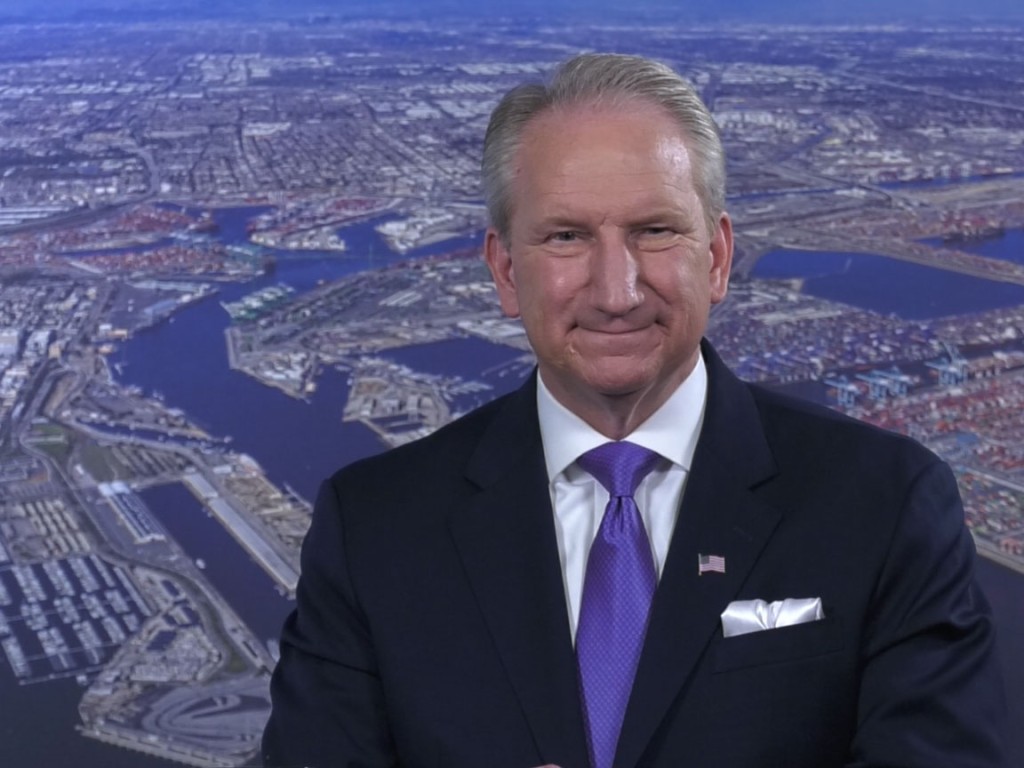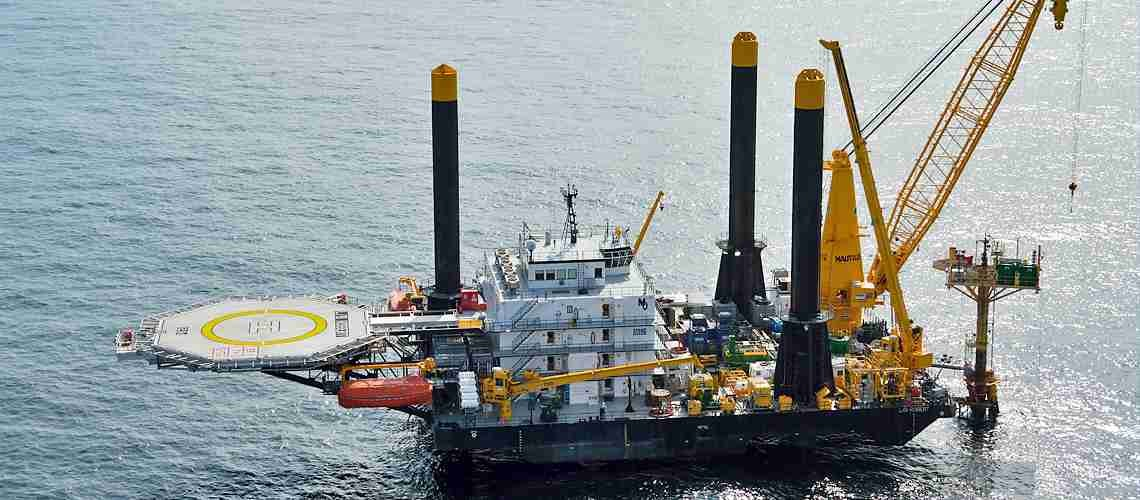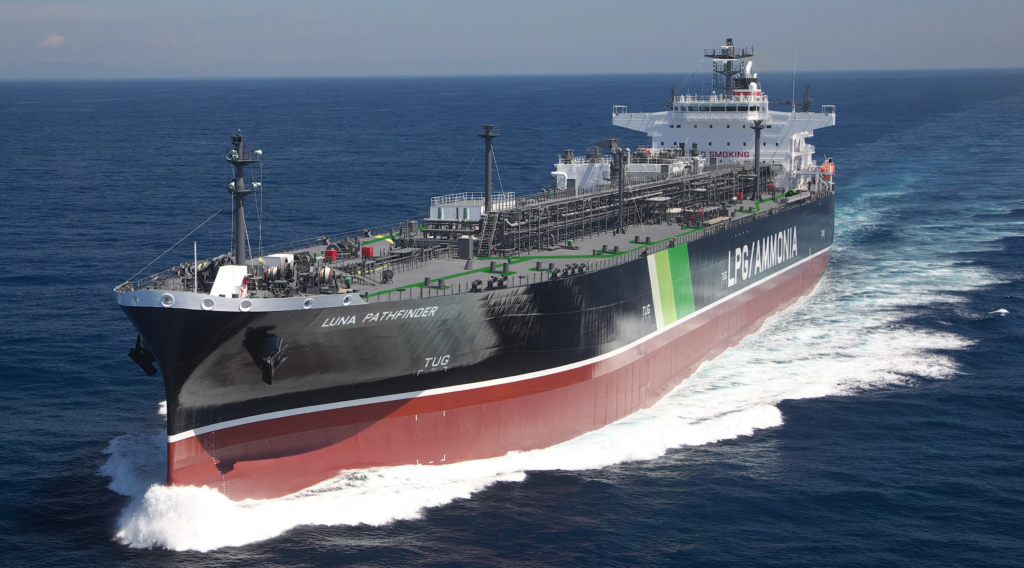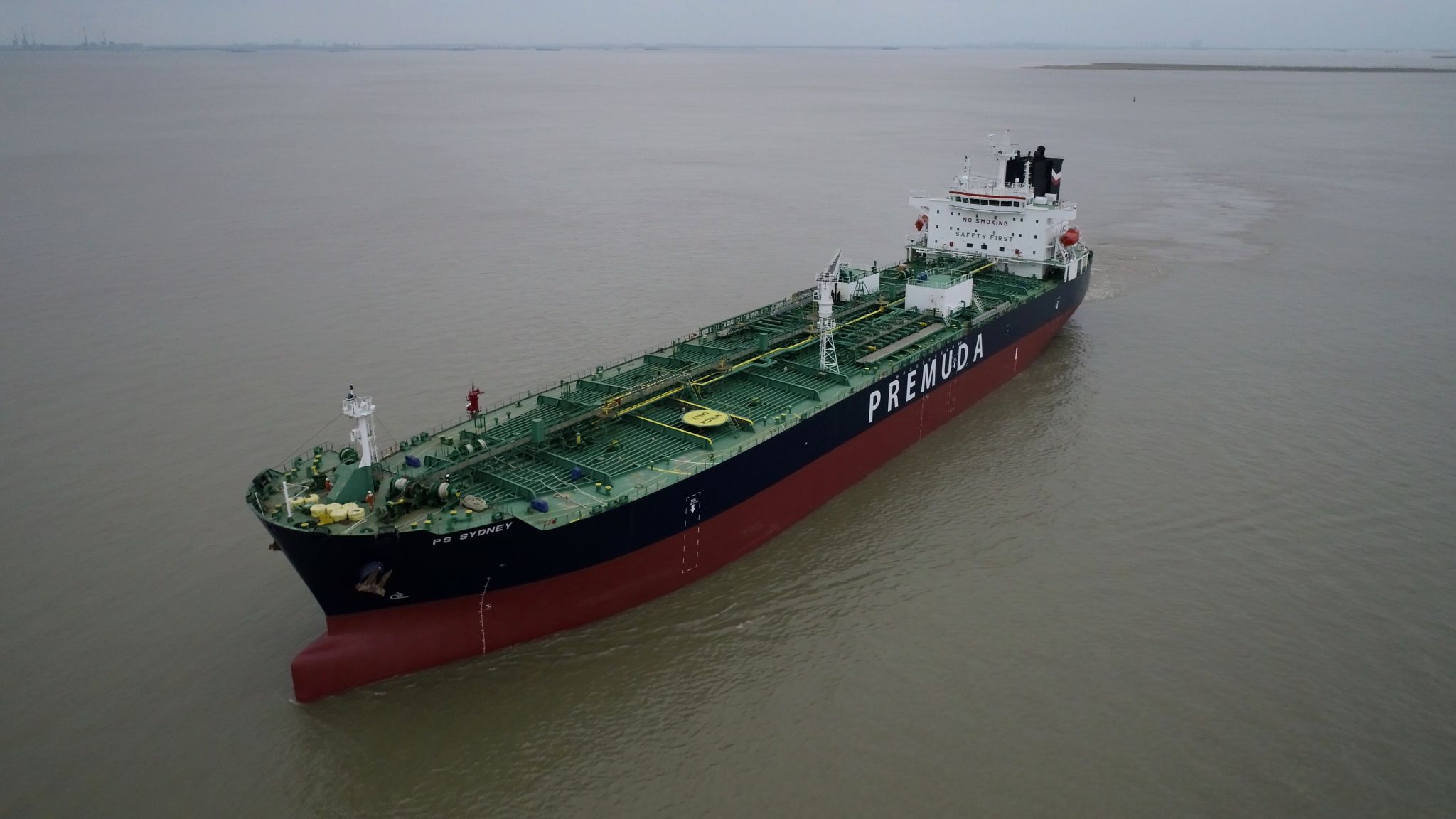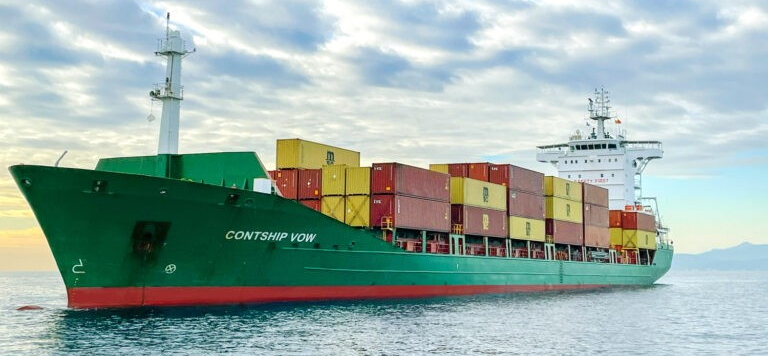Ajot: Port of Los Angeles sees UP-NS merger as ‘seamless transit’ to East Coast
The proposed Union Pacific/Norfolk Southern rail merger could provide the Port of Los Angeles with “seamless transit by rail from Los Angeles to New York and other East Coast …cities,” according to Eugene Seroka, Executive Director, Port of Los Angeles.
In an interview with AJOT, Seroka said that the proposed merger would provide Port customers with direct rail service to the East Coast that had not been possible before: “I think it gives us access to the most populous third of the nation that has otherwise been stitched together through handoffs.”Seroka said the proposed merger will make the Port more competitive with East Coast ports: “Yes, we’ll be more competitive to get cargo to the Eastern seaboard of the US for several reasons. Number one, you’ll have one company that carries your cargo from LA to New York to Pittsburgh, Philadelphia, Norfolk, Baltimore, et cetera, all the way down the Eastern seaboard.
Today, that cargo gets handed off in Northern Chicago … from the UP to an East Coast railroad.”
Seroka argues, “So, we have got growth opportunities … and the discretionary cargo that amounts to about a third of all the business we do has an easy way to … get to the Midwestern locations. And now, opening up that Eastern Seaboard to us makes a more compelling argument for the Port of Los Angeles to grow its discretionary market of intermodal rail.”
The new merged railroad will need to make “sure those connections become more seamless as the integration happens, whether it’s in North Chicago or West Cleveland, et cetera, and making sure that they have the ability to transfer that cargo across what used to be two companies and running it through one company. And I know the experts are working on that right now.”
In addition, there will be greater efficiencies: “So, there is time, expense, and necessary administrative work with the two companies’ combined, those efficiencies can be gained and the impacts of the handoffs lessened …The combined railroad will have more assets that it can move through its network to attack bottlenecks or improve efficiencies, and handle volume spikes that it didn’t have before.”
Then there is the human resource benefit: “And then from a human resources standpoint, I think the institutional knowledge between both companies will heighten the level of capability, career pathing, and service offered to the customer.”
However, there are regulatory issues that need to be addressed before the merger is final.
One concern is that the merged railroad could raise prices thanks to less competition: “There are regulatory hurdles that must be… approached here in the weeks and months ahead. And to the detractors who have said it will lead to poorer service and higher rates…, those two areas will absolutely need to be addressed too, at the most senior level of the companies.”
Seroka agreed that the issue of pricing needs to be addressed: “I think it absolutely has to be addressed because … it should be a concern of all with the companies and they must sit down and talk about these areas to make sure that any type of merger and the approvals necessary meet the commercial requirements of their customers.”
Transport Workers Oppose Merger
One indicator of opposition to the rail merger came from The Transport Workers Union of America which said it strongly opposes the planned merger between Union Pacific and Norfolk Southern and urges federal regulators, lawmakers, shippers, and unions to block the deal.
On July 29th, TWU International President John Samuelsen argued that: “A supersized Union Pacific would be catastrophic for TWU rail workers, shippers, and the safety of millions of Americans who live and work near freight rail lines.”
“Union Pacific cut railroad jobs even as other freight railroads ramped up hiring after the pandemic. They are not to be trusted by railroad workers nationwide, and the TWU will fight any attempt to ram through a merger that Wall Street might like but is bad for railroad workers and the safety of everyone,” said TWU Rail Division Director John Feltz. “This is going to be a long, drawn-out process where many groups will have a say. We expect the Surface Transportation Board, Federal Railroad Administration, key lawmakers, other railroads, and shippers to stand with organized labor and oppose this deal.”
The TWU represents more than 160,000 workers across the airline, railroad, transit, university, utility, and service sectors.
Port of LA Rail Infrastructure Important
Seroka was asked about whether the Port’s infrastructure is in place to handle increased intermodal volumes. He answered that the Port has upgraded its operations and logistics since the COVID era when ships were backed up at anchor: “I say we’ve all learned a lot from that time during COVID on what some of the deficiencies were, how we can make things better, how can we relate to one another in a much more constructive way than we ever have. And yeah, I think you’ve seen all areas of the supply chain really improve if we use that COVID time as the baseline … For example, in this month of July alone, next week we’ll announce our busiest month in the 117-year history of this Port of LA, and we didn’t have one ship backed up.
We moved more cargo in the second half of the year 2024 than we did during the peak of … COVID, and not one ship was backed up. Times were lower, and velocity was improved. The Port has the infrastructure to increase rail shipments in and out of the Port: We want to bring more intermodal cargo through the Gateway here in Southern California, and specifically the Port of Los Angeles. We have had numerous rail projects that have been completed and several others that are underway right now in order to increase rail capacity. The Alameda Corridor is under-subscribed. Right now, its utilization rate is about 30%.”
The Alameda Corridor is a 20-mile freight rail expressway owned by the Alameda Corridor Transportation Authority that connects the ports of Los Angeles and Long Beach with the transcontinental mainlines of the BNSF Railway and the Union Pacific Railroad that terminate near downtown Los Angeles. Running largely in a trench below Alameda Street, the corridor was considered one of the region’s largest transportation projects when it was constructed in the 1990s and early 2000s.
On-dock rail upgrades at the Port will facilitate added rail moves: “The cargo moving by rail, of which we’re pursuing more with that on-dock capability, additional storage tracks that we have, and the wide-open Alameda corridor capacity. We are going to have to move some cargo around that comes to us and leaves by truck to make sure that we have access to the major freeways.”
Cargo Theft is an Issue
At the Agriculture Transportation Coalition (AgTC) annual meeting at Tacoma, Washington, in June, a highlight presentation was delivered by Donna Lemm, Chief Strategy Officer, for IMC, a harbor trucking company based in Memphis, Tennessee. Lemm warned about the rising number of incidents, making cargo thefts a crisis. She said that over 80% of cargo thefts in the United States occur on America’s railroads.
Seroka agreed that there is an urgent need to fight cargo theft on the railroads and supports federal legislation to combat the crime spree: “It is a real problem. We need federal legislation.
We need the ability for local jurisdictions to be able to enable apprehensions of those suspects, and at the same time we need better technology to continue its important role in the transcontinental system. Breaking into these rail cars by organized crime continues to be a problem for not only the American consumer and the transporter, and those who try to get insurance.”
The bottom line for the railroads should be to “try to make sure that their assets and their crew are safe.”
Cargo theft is a national issue: “This is a national issue that has to be addressed at the federal, state, and local level, and I know the public safety task forces have been going all out for some time now. We need the underpinning of federal legislation and jurisdiction at the state and local levels to apprehend these people and stop this once and for all,” Seroka said.
Related Posts

